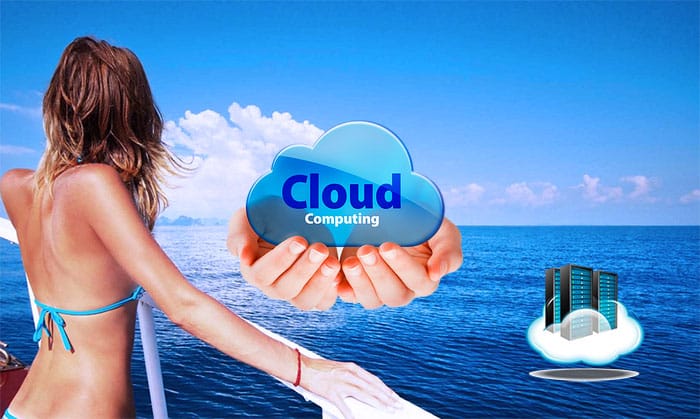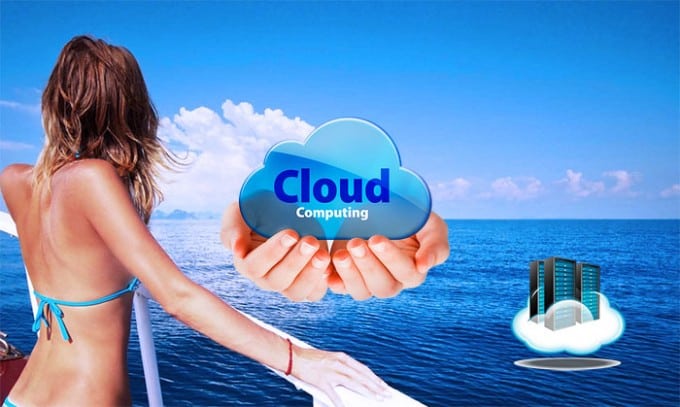Cloud vs. Enterprise: DAAS Picks Up Where VDI Failed

Spurred on by the enormous savings found in virtualizing every physical server on the planet, it was only natural that your garden variety CIO postulated his next epiphany: virtualizing desktops would have the same reward. Gartner Research and all the other major analysts agreed, even if no one noticed there wasn’t a magic quadrant to guide us there. Unbothered by details, the enterprise valiantly pushed forward. Well, you know what they say about assumptions. Yet, faced with the decision to either cut costs or cut heads, businesses placed a lot of pressure on CIOs to both leverage technology as a bridge to revenue they couldn’t realize without innovation, while cutting costs to pay for this strategic goal. Some CIOs were afraid to choose a path, particularly around virtual desktops, while others plunged in, going with their tried and true vendors, VMware and Citrix. Both CIOs more times than not, got fired. Why?
The Big Lie
In my opinion, everything you think you know and were told about with regards to how to host virtual desktops is wrong. But why? Simply put: virtual desktops are the absolute worst workload you will ever try to host in your entire IT career. I say this as a man with 20+ certifications including CCIE, VCP, EMCTA, MASE, and much more. In the three years I’ve been running one of the largest DAAS providers; I’ve made every mistake you did or are about to. In short, you’ve got the wrong servers, wrong network, wrong storage, and wrong software solution to solve the problem. Yet, every vendor out there made it seem like you could just blend Virtual Desktop Infrastructure (VDI) right in with your existing environment! When sold the “big lie”, fools rush in, not the least of which was the me-too private cloud folks. I remember speaking at VMworld’s 2011 conference and behind me the theme was, “Your Cloud, Own It.” I asked the crowd “y’all nuts?” Call me prophetic.
The Carpetbaggers
The term carpetbagger was a pejorative term from the post-Civil War reconstruction era (1865-1877) wherein a Northerner (Yankee) moved to the South in order to profit from the instability and power vacuum that existed after the war. The term itself refers to the carpet bags (a fashionable form of luggage at the time), which many of these newcomers carried. The term came to be associated with opportunism and exploitation by outsiders. So after everyone burned their IT infrastructure to the ground trying to host something as “simple” as a virtual desktop, the carpetbaggers of the channel stepped right in to capitalize on the charred ruins. Soon, more flavors of servers, networks, and storage sprang up with the “VDI” label attached to them than Baskin Robbins has selections for ice cream. Flash memory or SSD accelerated front ends to SAS/SATA spindle based storage, insatiable 30amp sucking blade systems, network switches for the future of networking with 10g/40g/100g that take 4 men just to rack the beast, thin clients that cost more than laptops, and a dizzying array of software to protect, manage, and maintain a VDI infrastructure reference design that was spiraling out of control, right along with the budget & lack of results. VDI, very quickly became a novelty…not a true Windows desktop replacement. It was justified as a disaster recovery option to “get us by” if chaos strikes or as a remote access VPN replacement to keep corporate data within the castle’s walls. Response time when typing in MS Word lagged, most videos didn’t work particularly in high resolution, and flash heavy websites stepped all over the “MMR” (multi-media redirection) techniques often used in VDI. User complaints never ended; every single problem wasn’t just Windows now, in fact VDI got blamed. Next, more hardware was thrown at the problem as talk of virtualizing GPUs (graphics processor units) and even sticking VDI friendly hardware accelerators into your endpoint to make it faster and raise user experience levels. Pure nonsense, but the unabashed carpetbagger persists to this day.
Sheer Economics, Watson
This is one of the biggest reasons VDI fails. While cloud is known for its endless innovation of near alien technology, there’s a lot of math that goes into the economics as well. You could put a rack of cloud next to a rack of enterprise and it’s literally night and day. 1u/2u pizza box servers replace blade systems; ultra-low latency 40gbps infiniband replace Ethernet; object oriented storage with advanced erasure coding techniques replace RAID fueled SAN/NAS storage with de-duplication; regular power cords replace 30amp 208v circuits to all gear reducing cost per rack by over $10,000/month. But the exponential savings don’t stop there: storage alone goes from 24.6 cents per GB/month with two unencrypted copies of the data to 4.6 cents per GB/month with three encrypted copies of the data. You can’t compete with cloud, heck you can’t even buy the technology cloud uses.
So, Why DAAS?
One principle we all learned is still true to this day: convergence of anything equals cost savings and efficiencies of great magnitude. This is why private cloud is ultimately doomed. Rather, the right question to ask is how many public clouds should I host my data in?
DAAS is a turn-key instant on virtual desktop running true Windows 7 (>250 seats) or Win2k8 made to look like Windows 7 (they are 100% code compatible with each other) that can be connected back to your offices worldwide via the Internet, P2P VPN tunnel, full mesh private MPLS, or P2P circuits. At < $40/user a month, it can be provisioned for 10,000+ users in an hour while sitting atop the best infrastructures on the planet. DAAS can be upgraded in ways VDI and physical endpoints cannot: you can have up to 48vCPU, 512GB memory, and an unlimited amount of storage. We call these fantasy desktops, but people do build them in the cloud because they are always there 24x7x365 ready to be used by any android, iPad, Chromebook, Windows and Linux device. Most DAAS today connects you from those endpoints to a Windows desktop, but new flavors of base operating systems are coming this summer such as Ubuntu Linux Desktop, Android, and Chrome. Prefer Linux or trying to learn it? Moved to iPhone but want to keep your Android apps? Don’t want the cost of an iPad because you just bought a Chromebook but need Windows reduced to an app? DAAS saves the day.
The Future
In the coming years you will be able to login to every resource you have from anywhere in the world at high speed with local response times. You can thank object oriented storage for this as it replicates worldwide. webRTC and HTML5 powered virtual desktops that are already just drag/drop extensions in Google Chrome (and soon to be other browsers) will make integration, skins/customization, and overall experience of blending the Web, VOIP, video, chat, and DAAS together so very easy. For now though, I still get asked, “Will that run in a virtual desktop?” I still remember when people asked that about virtual servers.
*******
By, Mike L. Chase is EVP and Chief Technology Officer for dinCloud, a cloud services provider and transformation company that helps businesses and public/private organizations rapidly migrate to the cloud through the hosting of servers, desktops, storage, and other cloud services via its strong channel base of VARs and MSPs. Visit dinCloud on LinkedIn: www.linkedin.com/company/dincloud.
Add CEOWORLD magazine to your Google News feed.
Follow CEOWORLD magazine headlines on: Google News, LinkedIn, Twitter, and Facebook.
This report/news/ranking/statistics has been prepared only for general guidance on matters of interest and does not constitute professional advice. You should not act upon the information contained in this publication without obtaining specific professional advice. No representation or warranty (express or implied) is given as to the accuracy or completeness of the information contained in this publication, and, to the extent permitted by law, CEOWORLD magazine does not accept or assume any liability, responsibility or duty of care for any consequences of you or anyone else acting, or refraining to act, in reliance on the information contained in this publication or for any decision based on it.
Copyright 2024 The CEOWORLD magazine. All rights reserved. This material (and any extract from it) must not be copied, redistributed or placed on any website, without CEOWORLD magazine' prior written consent. For media queries, please contact: info@ceoworld.biz
SUBSCRIBE NEWSLETTER










